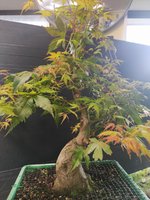fredman
Masterpiece
I'll give you the whole back story...
I bought this tree some years ago and planted it in the garden. After a year I removed it as the wind here is way to destructive for its delicate leaves.
I trimmed the roots and put it in a container. I didn't really know what to do with it...TBH.
Here it is in the container then.
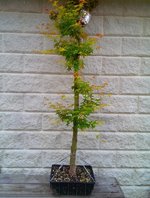
About 2 years later I decided to chop it and see how it grows
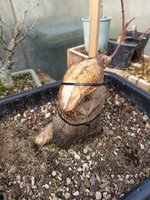
I can't for the life of me remember what I did after this, but I had a habit of putting trees in containers...drill it full of holes and recess it in the grow bed. I must've done it with this one to.
Anyway, coming up is the latest photos of it now. It has put on some decent growth and started rolling over well. Since last winter I had the plan of air layering it at the top of the roll over...marked with a black line....its a bit faint now.
Now i'm in two minds whether to layer...and make a new tree from the top....or develop it as is, by carving the bottom and work the branches. I'm not exactly sure about how much to carve...the bulge kinda worries me. Not sure if it'll work. Also the nebari isn't that good. A tree of this size should have some flare...I recon.

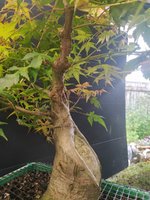
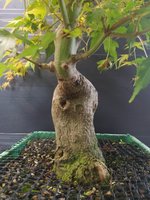
I would really like to hear your opinions plz. The time to layer is now
Thank you.
I bought this tree some years ago and planted it in the garden. After a year I removed it as the wind here is way to destructive for its delicate leaves.
I trimmed the roots and put it in a container. I didn't really know what to do with it...TBH.
Here it is in the container then.

About 2 years later I decided to chop it and see how it grows

I can't for the life of me remember what I did after this, but I had a habit of putting trees in containers...drill it full of holes and recess it in the grow bed. I must've done it with this one to.
Anyway, coming up is the latest photos of it now. It has put on some decent growth and started rolling over well. Since last winter I had the plan of air layering it at the top of the roll over...marked with a black line....its a bit faint now.
Now i'm in two minds whether to layer...and make a new tree from the top....or develop it as is, by carving the bottom and work the branches. I'm not exactly sure about how much to carve...the bulge kinda worries me. Not sure if it'll work. Also the nebari isn't that good. A tree of this size should have some flare...I recon.



I would really like to hear your opinions plz. The time to layer is now
Thank you.



